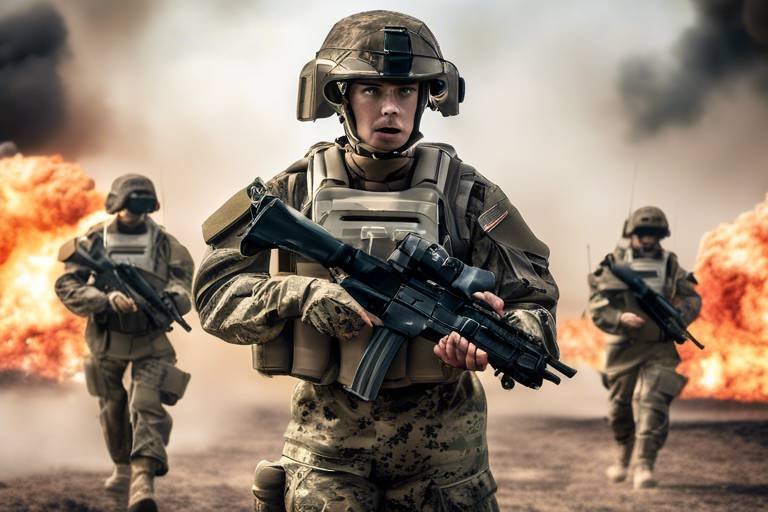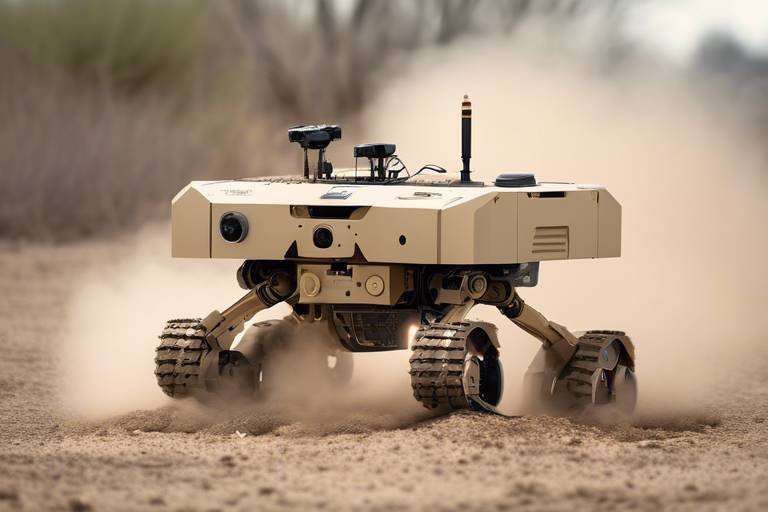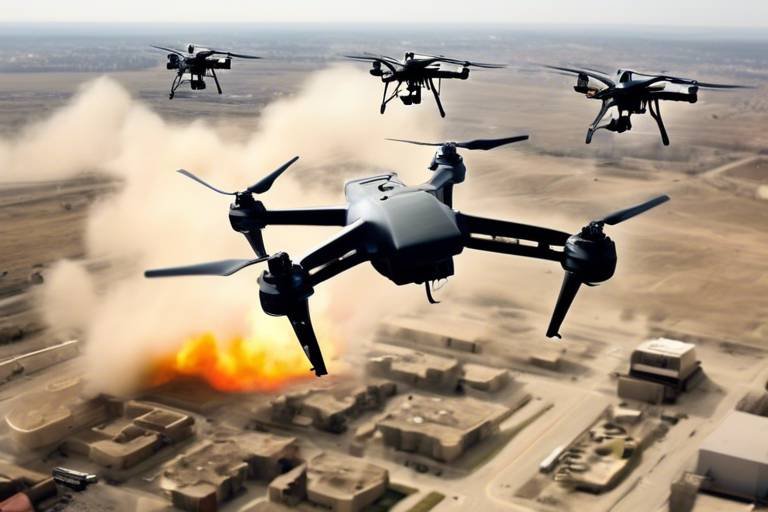AI in Artillery Systems - Enhancing Firepower Accuracy
In the ever-evolving landscape of modern warfare, the integration of artificial intelligence (AI) into artillery systems marks a pivotal shift in how military operations are conducted. Gone are the days when firing a cannon was a matter of simple calculations and educated guesses. Today, AI enhances firepower accuracy, transforming artillery into a sophisticated, data-driven powerhouse that can adapt to the chaos of the battlefield. Imagine a world where artillery units can predict enemy movements and adjust their fire in real-time, ensuring that each shot counts. This isn't just a dream; it’s becoming a reality thanks to the remarkable advancements in AI technology.
AI's role in artillery systems goes beyond mere automation. It serves as a comprehensive tool that enhances targeting precision, operational efficiency, and decision-making processes. By leveraging vast amounts of data, AI can analyze variables such as wind speed, terrain, and enemy movements, allowing for more effective strikes. In this article, we will delve into how AI is revolutionizing artillery systems, making them more accurate, efficient, and ultimately, more lethal on the battlefield.
Artificial intelligence is revolutionizing military operations, providing advanced capabilities in data analysis, predictive modeling, and automation. These capabilities are crucial for enhancing artillery effectiveness on the battlefield. Think of AI as the brain behind artillery systems, processing information faster than any human could, and making decisions based on real-time data. This capability allows military leaders to stay one step ahead of their adversaries, ensuring that they can respond swiftly to any situation.
One of the most significant advantages of AI in artillery systems is its ability to improve targeting precision dramatically. AI technologies enable artillery systems to analyze vast amounts of data, which helps in calculating variables that affect accuracy. For instance, factors such as wind speed, humidity, and even the curvature of the Earth can now be taken into account. This level of precision leads to more effective strikes, minimizing collateral damage and increasing mission success rates.
The ability to process real-time data allows artillery units to adapt quickly to changing battlefield conditions. Imagine a scenario where enemy forces are on the move; traditional systems might take precious time to recalibrate. However, with AI, artillery units can adjust their targeting almost instantaneously, ensuring that decisions are based on the latest information available. This agility is crucial in modern warfare, where every second counts.
AI systems are increasingly integrated with advanced sensor technologies, enhancing the capability to detect and track targets. These sensors can provide real-time information about enemy positions, movements, and even the effectiveness of previous strikes. The synergy between AI and sensor technology creates a powerful combination that is essential for effective artillery operations.
Machine learning algorithms play a vital role in refining targeting methods over time. They learn from past engagements, analyzing what worked and what didn’t, and use this information to improve future performance and accuracy. This continuous learning process means that artillery systems are not just static tools; they evolve and become more effective with each use.
AI aids commanders in making informed decisions by providing predictive analytics and simulations. These tools can forecast potential outcomes of various tactical choices, allowing military leaders to weigh their options carefully before acting. The ability to simulate different scenarios means that commanders can prepare for a range of possibilities, ultimately leading to better strategic decisions on the battlefield.
AI-driven automation streamlines artillery operations, reducing the need for manual intervention and allowing for faster response times in critical situations. This automation is not just about speed; it also enhances safety by minimizing the risks to personnel. In high-stakes environments, where every moment matters, having automated systems can make all the difference.
The development of autonomous targeting systems enables artillery to engage threats independently. This capability increases operational efficiency and reduces risks to personnel. Imagine a scenario where artillery units can identify and target threats without waiting for human input; this not only speeds up response times but also allows human operators to focus on other critical tasks.
AI also plays a crucial role in optimizing logistics and supply chains for artillery units. By analyzing data related to ammunition usage, supply levels, and operational needs, AI ensures that resources are effectively managed and deployed where they are needed most. This optimization leads to more efficient operations and can significantly impact the overall effectiveness of military campaigns.
- How does AI improve artillery targeting? AI analyzes various data points such as wind speed and terrain to enhance targeting accuracy.
- What role does machine learning play in artillery systems? Machine learning algorithms help refine targeting methods by learning from past engagements.
- Can artillery systems operate autonomously? Yes, advancements in AI allow for autonomous targeting systems that can engage threats independently.
- How does AI impact military logistics? AI optimizes logistics by managing resources and ensuring they are deployed effectively.
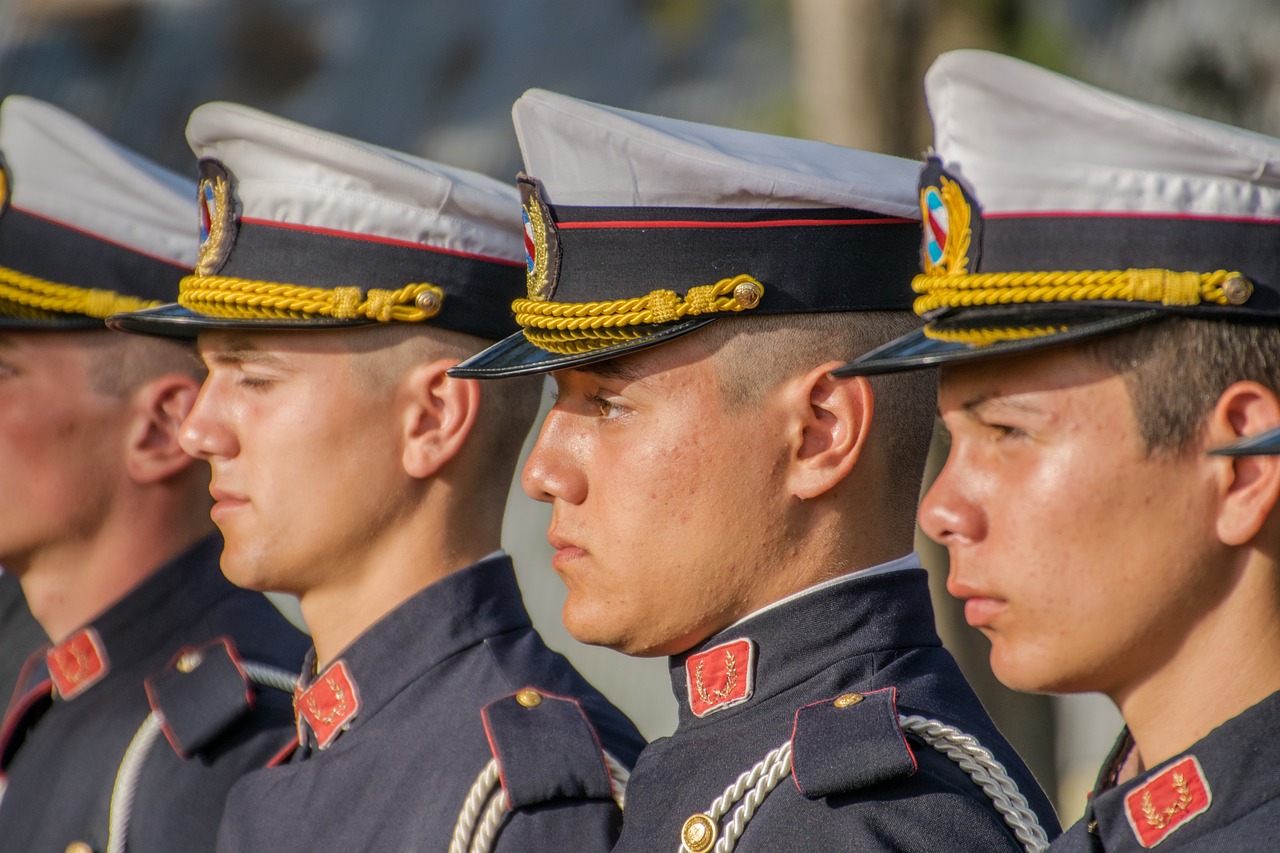
Understanding AI in Military Applications
Artificial intelligence is not just a buzzword; it's a game-changer in the realm of military operations. With the advent of AI, the military is experiencing a transformation that enhances its capabilities in ways that were once the stuff of science fiction. Imagine having a super-intelligent assistant that can analyze mountains of data in seconds, predict enemy movements, and optimize artillery strikes—all while keeping soldiers safe. This is the power of AI in military applications.
At its core, AI in the military focuses on three main areas: data analysis, predictive modeling, and automation. These capabilities are crucial for enhancing the effectiveness of artillery systems on the battlefield. For instance, AI can sift through data from various sources, such as satellite imagery, reconnaissance reports, and real-time battlefield updates. By doing so, it can identify patterns and trends that human analysts might miss, leading to more informed decision-making.
Moreover, the integration of AI with existing military technologies creates a synergy that amplifies their effectiveness. For example, when AI is combined with sensor technologies, it can significantly enhance target detection and tracking. This integration allows for a more comprehensive understanding of the battlefield environment, enabling artillery units to respond more effectively to threats. The result is a more agile and responsive military force capable of adapting to rapidly changing conditions.
One of the most exciting aspects of AI in military applications is its ability to learn and improve over time. Through machine learning algorithms, AI systems can refine their analysis based on past engagements. This means that the more they are used, the better they become at predicting outcomes and optimizing strategies. It's like having a seasoned veteran on the battlefield, but in digital form, continuously learning from each encounter.
In summary, the integration of AI into military applications is not just about keeping up with technological advancements; it's about redefining how military operations are conducted. The potential for improved targeting precision, enhanced decision-making, and streamlined operations is immense. As we move forward, we can expect AI to play an increasingly vital role in shaping the future of warfare.
- What role does AI play in artillery systems? AI enhances targeting precision, improves decision-making, and automates operations, making artillery systems more effective.
- How does AI improve targeting accuracy? AI analyzes vast amounts of data, including environmental factors and enemy movements, to calculate the best firing solutions.
- Can AI operate artillery systems autonomously? Yes, AI-driven autonomous targeting systems can engage threats independently, increasing operational efficiency.
- How does machine learning contribute to military AI? Machine learning allows AI systems to learn from past engagements, improving their performance and accuracy over time.

Improving Targeting Precision
In the fast-paced world of modern warfare, where every second counts, precision is not just a luxury; it’s a necessity. The integration of artificial intelligence (AI) into artillery systems is a game-changer in this regard. Imagine having the ability to analyze mountains of data in the blink of an eye, adjusting your aim based on real-time variables like wind speed, terrain, and enemy movements. This is not science fiction; it’s happening right now, and it’s revolutionizing how we think about targeting in combat scenarios.
AI technologies are designed to enhance the accuracy of artillery strikes significantly. For instance, advanced algorithms can process environmental factors and historical data to predict the most effective targeting solutions. This means that artillery units can achieve a higher hit rate, minimizing collateral damage and ensuring that the intended targets are neutralized effectively. The results? More successful missions and a greater chance of achieving strategic objectives without unnecessary losses.
One of the standout features of AI in artillery systems is its ability to process data in real-time. Think of it as having a personal assistant who not only gathers information but also interprets it instantly. This capability allows artillery units to adapt quickly to changing battlefield conditions. For example, if a sudden gust of wind shifts, AI can recalibrate the targeting parameters on the fly, ensuring that the artillery fire remains accurate. This adaptability is crucial in combat, where the situation can change from calm to chaotic in seconds.
Furthermore, AI systems are increasingly integrated with advanced sensor technologies. These sensors can detect and track targets with remarkable precision. Imagine a network of eyes on the battlefield, constantly scanning for threats and relaying that information back to the artillery units. This synergy between AI and sensor technology enhances the capability to engage targets effectively, ensuring that artillery operations are not only accurate but also timely. The result is a more cohesive and responsive military strategy that can outmaneuver adversaries.
Machine learning algorithms play a pivotal role in refining targeting methods over time. They learn from every engagement, analyzing what worked and what didn’t, and using this data to improve future performance. It's akin to a seasoned athlete reviewing their game footage to identify areas for improvement. With each iteration, the AI becomes smarter, more efficient, and ultimately more lethal. This continuous learning process ensures that artillery units remain at the forefront of technological advancements, adapting to new challenges as they arise.
In summary, the integration of AI into artillery systems is a revolution in targeting precision. By leveraging real-time data processing, advanced sensor technologies, and machine learning algorithms, military forces can significantly enhance their operational effectiveness. This not only leads to more successful missions but also ensures that the cost of warfare—both in human lives and resources—is minimized. As we move forward, the role of AI in artillery will undoubtedly expand, shaping the future of military engagements.
- How does AI improve targeting accuracy in artillery?
AI analyzes vast amounts of data to calculate various factors that affect accuracy, such as wind speed and terrain. - What role do sensors play in AI artillery systems?
Sensors enhance the ability to detect and track targets, providing real-time information to artillery units. - Can AI adapt to changing battlefield conditions?
Yes, AI can process real-time data, allowing artillery units to adjust their strategies quickly as conditions change. - How does machine learning contribute to artillery effectiveness?
Machine learning algorithms refine targeting methods over time by learning from past engagements, leading to improved accuracy.
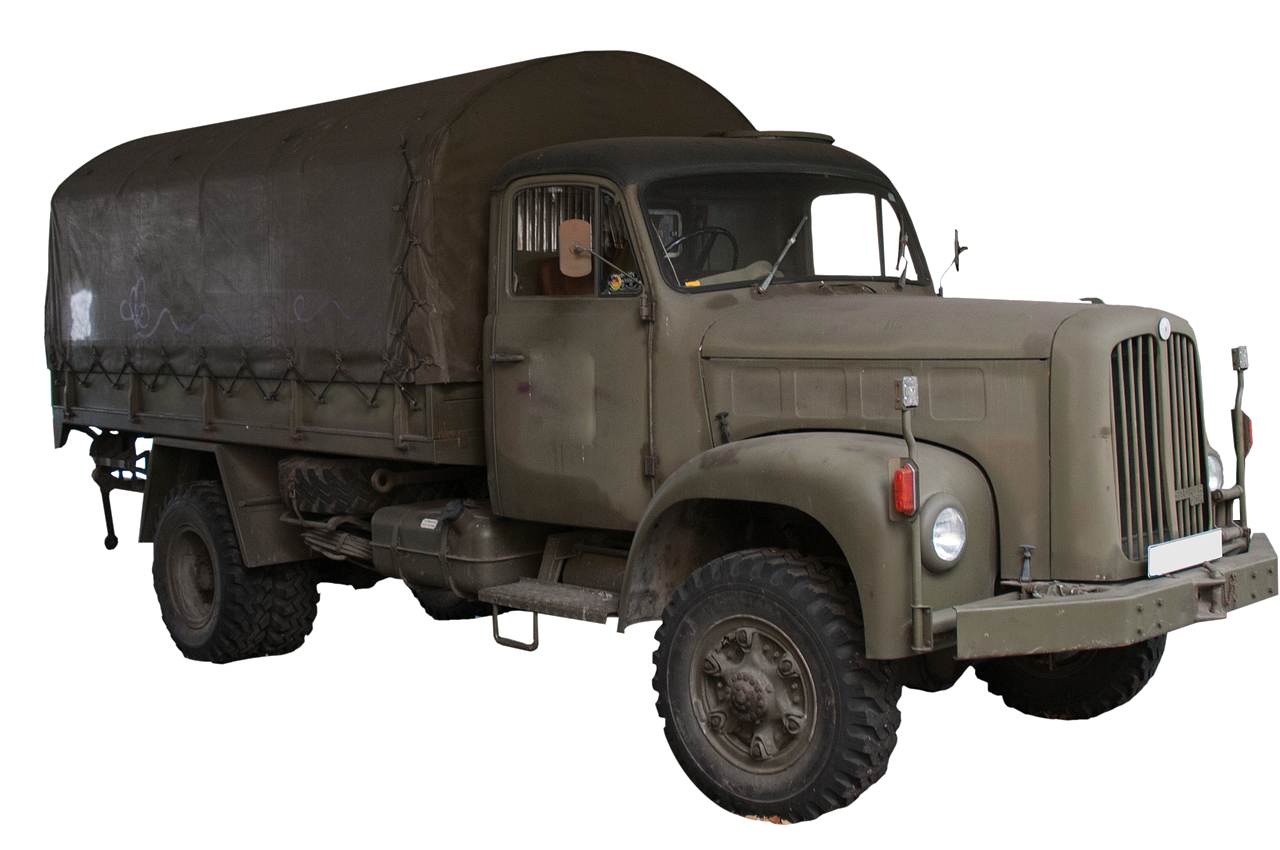
Real-Time Data Processing
In the fast-paced environment of modern warfare, has become a game-changer for artillery systems. Imagine being in a high-stakes game of chess, where every move counts and the board is constantly changing. This is precisely what artillery units face on the battlefield; they must adapt quickly to evolving conditions to maintain their effectiveness. By leveraging AI technologies, artillery systems can analyze and interpret data as it streams in, allowing for rapid adjustments to targeting and firing solutions.
The significance of real-time data processing lies in its ability to fuse information from various sources, including satellite imagery, drone surveillance, and ground sensors. This integration enables artillery units to create a comprehensive picture of the battlefield. For instance, if enemy units are on the move, AI can process information about their speed and direction, allowing artillery to recalibrate its targeting parameters almost instantaneously. This capability not only enhances the accuracy of strikes but also minimizes collateral damage, a critical consideration in contemporary military operations.
Moreover, the efficiency of real-time data processing can be illustrated through the following table, which highlights key components and their impacts:
| Component | Impact on Artillery |
|---|---|
| Data Fusion | Combines information from multiple sensors for a unified operational picture. |
| Predictive Analytics | Forecasts enemy movements and environmental changes to enhance targeting. |
| Automated Adjustments | Allows for real-time recalibration of artillery systems based on incoming data. |
With the integration of these advanced technologies, artillery units can operate with a level of precision and speed that was previously unimaginable. This not only increases the effectiveness of military operations but also provides commanders with the confidence to make quick, informed decisions in the heat of battle. In essence, real-time data processing transforms artillery systems into agile components of modern warfare, capable of responding to threats with unprecedented accuracy.
- What is real-time data processing in artillery systems? - It refers to the capability of artillery units to analyze and act on incoming data immediately, allowing for quick adjustments to targeting and firing solutions.
- How does AI enhance targeting accuracy? - AI analyzes vast amounts of data, including environmental factors and enemy movements, to improve targeting precision.
- What role do sensors play in artillery operations? - Sensors gather critical data, which AI systems then process to create a comprehensive battlefield picture, enhancing operational effectiveness.
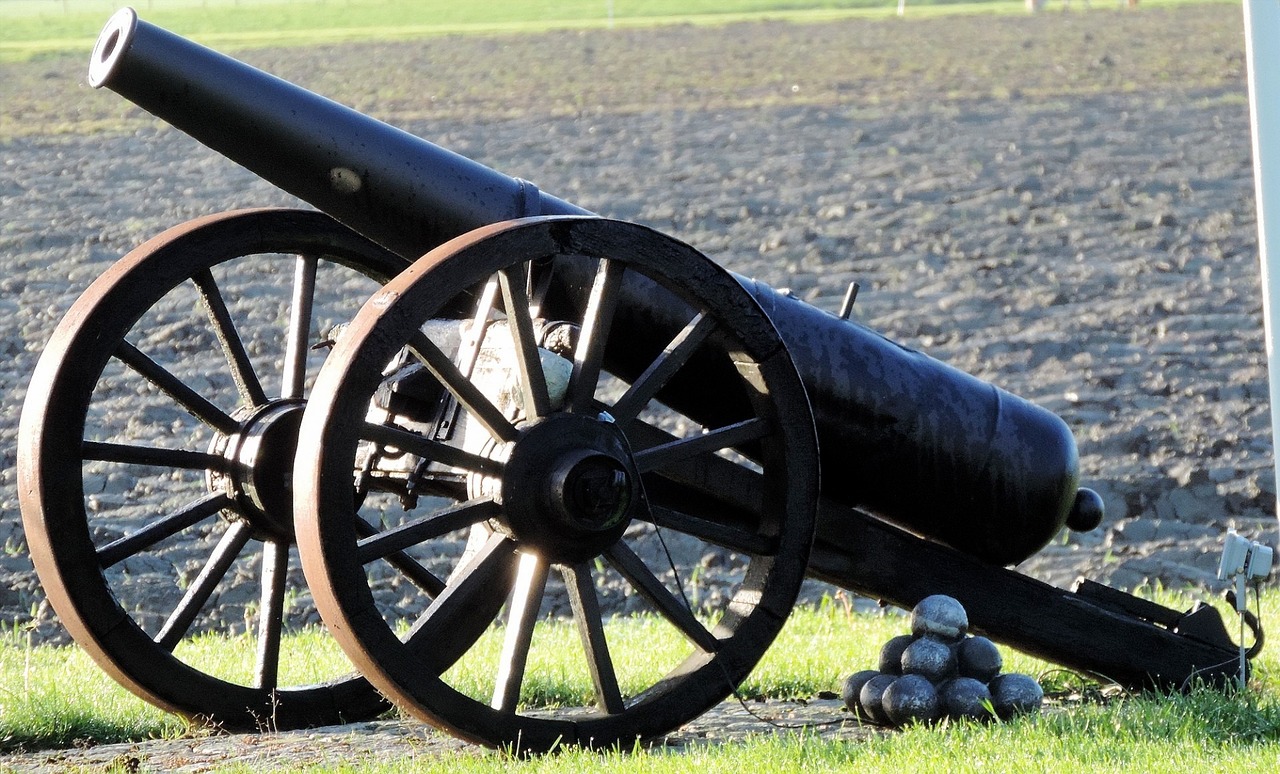
Integration with Sensor Technologies
In the rapidly evolving landscape of modern warfare, the integration of artificial intelligence with sensor technologies is becoming a game changer for artillery systems. Imagine a scenario where artillery units can not only detect targets but also analyze their movements and environmental conditions in real-time. This is not just a dream; it’s the reality that AI is creating on the battlefield. By utilizing advanced sensors equipped with AI capabilities, military forces can achieve a level of precision that was previously unimaginable.
These sophisticated sensors include radar systems, infrared cameras, and unmanned aerial vehicles (UAVs), all working in concert to gather critical data. The beauty of this integration lies in the ability to process vast amounts of information almost instantaneously. For example, when a sensor detects a moving target, the AI system can quickly analyze factors such as wind speed, temperature, and terrain variations to calculate the optimal firing solution. This not only enhances the accuracy of artillery strikes but also minimizes collateral damage, which is a growing concern in modern military operations.
Furthermore, the synergy between AI and sensor technologies allows for continuous learning. The AI algorithms can refine their targeting capabilities by evaluating previous engagements, learning from successes and failures alike. This means that with each operation, artillery systems become more adept at making critical decisions based on real-time data. The result? A more agile and responsive military force that can adapt to the chaos of battle with remarkable efficiency.
To illustrate the impact of this integration, consider the following table that outlines the key benefits:
| Benefit | Description |
|---|---|
| Improved Target Detection | Advanced sensors can identify and track multiple targets simultaneously, ensuring no threat goes unnoticed. |
| Real-Time Analysis | AI processes data instantly, allowing for immediate adjustments to firing solutions based on environmental changes. |
| Reduced Human Error | Automated systems minimize the risk of mistakes that can occur with manual calculations, enhancing overall mission success. |
| Enhanced Situational Awareness | Integrating AI with sensors provides commanders with a comprehensive view of the battlefield, facilitating better strategic decisions. |
In conclusion, the integration of AI with sensor technologies is not just enhancing artillery systems; it is redefining how military operations are conducted. As these technologies continue to advance, we can expect even greater improvements in targeting precision and operational efficiency, ultimately leading to more successful missions and safer outcomes for military personnel.
- What role does AI play in artillery systems? AI enhances targeting precision, improves decision-making, and automates operations, making artillery systems more effective.
- How do sensor technologies improve artillery effectiveness? They provide real-time data on targets and environmental conditions, allowing for more accurate strikes.
- Can AI learn from past engagements? Yes, machine learning algorithms enable AI systems to refine their targeting methods based on historical data.
- What are the benefits of automating artillery operations? Automation reduces manual intervention, speeds up response times, and minimizes risks to personnel.

Machine Learning Algorithms
Machine learning algorithms are at the forefront of transforming artillery systems into more effective and precise tools of warfare. By utilizing vast amounts of historical data from past military engagements, these algorithms can identify patterns and trends that human analysts might overlook. Imagine having a smart assistant that not only learns from every decision you make but also predicts the best course of action based on previous outcomes. This is precisely what machine learning brings to the table in the context of artillery operations.
One of the key advantages of machine learning in artillery is its ability to refine targeting methods over time. As the algorithms process more data, they become increasingly adept at making accurate predictions about various factors that influence artillery strikes. For instance, they can analyze variables such as meteorological conditions, terrain characteristics, and even the movement patterns of enemy forces. This continuous learning process means that each engagement contributes to a more informed decision-making framework for future missions.
To illustrate the impact of machine learning algorithms, consider the following table that summarizes their benefits:
| Benefit | Description |
|---|---|
| Increased Accuracy | Algorithms analyze past data to improve targeting precision, resulting in fewer collateral damages. |
| Adaptive Learning | Systems learn from each engagement, adjusting tactics based on real-time feedback. |
| Predictive Analytics | Forecasts enemy movements and environmental changes for better operational planning. |
Moreover, machine learning algorithms can be integrated with other AI technologies to create a holistic approach to artillery operations. For example, when combined with real-time data from advanced sensors, these algorithms can make rapid adjustments to targeting parameters, ensuring that artillery units remain effective even in dynamic battlefield conditions. This synergy between machine learning and sensor data is akin to a conductor guiding an orchestra, where each instrument plays its part to produce a harmonious and effective outcome.
As we look to the future, the role of machine learning in artillery systems will only expand. With advancements in computational power and data collection techniques, we can expect these algorithms to become even more sophisticated. They will not only enhance the accuracy and efficiency of artillery strikes but will also play a crucial role in minimizing risks to personnel and collateral damage. In essence, machine learning algorithms are not just a technological upgrade; they represent a paradigm shift in how military operations are conducted, making them more precise, efficient, and ultimately more humane.
- What are machine learning algorithms?
Machine learning algorithms are computational models that learn from data to make predictions or decisions without being explicitly programmed for each task.
- How do machine learning algorithms improve artillery accuracy?
They analyze vast datasets from previous engagements to identify patterns and optimize targeting methods, leading to more precise strikes.
- Can machine learning algorithms adapt to changing battlefield conditions?
Yes, these algorithms can process real-time data and adjust their predictions and targeting parameters accordingly, ensuring effectiveness in dynamic environments.
- What is the future of machine learning in military applications?
The future looks promising, with advancements in technology likely to enhance the capabilities of machine learning algorithms, making military operations more efficient and accurate.
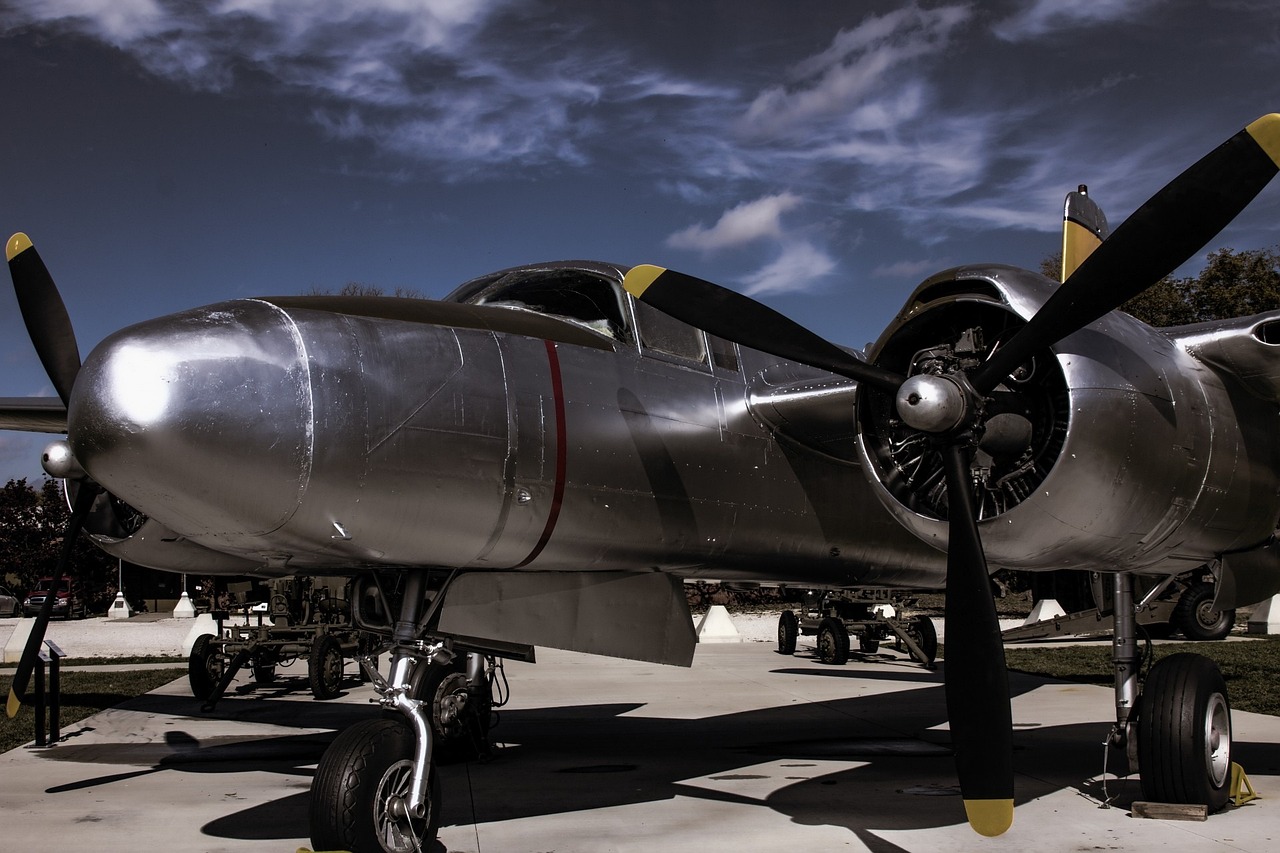
Enhanced Decision-Making
This article explores the integration of artificial intelligence in artillery systems, focusing on how it improves targeting precision, operational efficiency, and decision-making processes in modern warfare.
Artificial intelligence is revolutionizing military operations, providing advanced capabilities in data analysis, predictive modeling, and automation, which are crucial for enhancing artillery effectiveness on the battlefield.
AI technologies enable artillery systems to analyze vast amounts of data, improving targeting accuracy by calculating variables such as wind speed, terrain, and enemy movements, leading to more effective strikes.
The ability to process real-time data allows artillery units to adapt quickly to changing battlefield conditions, ensuring that decisions are based on the latest information available.
AI systems are increasingly integrated with advanced sensors, enhancing the capability to detect and track targets, which is essential for effective artillery operations.
Machine learning algorithms help in refining targeting methods over time, learning from past engagements to improve future performance and accuracy.
In the chaos of modern warfare, decision-making can be the difference between success and failure. AI plays a pivotal role in enhancing this process by providing commanders with tools that offer predictive analytics and simulations. Imagine being able to forecast the outcomes of various tactical choices before making a move; this is the power that AI brings to the battlefield. By analyzing historical data and current battlefield conditions, AI systems can suggest the best course of action based on a multitude of factors, including enemy movements, terrain, and even weather conditions.
For instance, when faced with a decision to engage an enemy position, an AI system can evaluate:
- Current troop positions
- Available artillery resources
- Potential enemy reinforcements
- Environmental factors such as fog or rain
This comprehensive analysis allows commanders to visualize the battlefield in a way that was previously unimaginable. Moreover, the simulations provided by AI can illustrate various scenarios, helping military leaders understand potential risks and rewards before making critical decisions.
Furthermore, the integration of AI into decision-making processes enhances collaboration among different military units. With AI-driven tools, information can be shared seamlessly across platforms, ensuring that every unit is on the same page. This level of coordination is vital in complex operations where timing and precision are crucial. As a result, commanders can make quicker, more informed decisions that lead to successful mission outcomes.
AI-driven automation streamlines artillery operations, reducing the need for manual intervention and allowing for faster response times in critical situations.
The development of autonomous targeting systems enables artillery to engage threats independently, increasing operational efficiency and reducing risks to personnel.
AI optimizes logistics and supply chains for artillery units, ensuring that ammunition and resources are effectively managed and deployed where they are needed most.
- How does AI improve targeting precision in artillery systems?
AI enhances targeting precision by analyzing large datasets to consider variables like wind speed, terrain, and enemy movements, leading to more accurate strikes. - What role does real-time data processing play in artillery operations?
Real-time data processing allows artillery units to adapt quickly to changing battlefield conditions, ensuring timely and informed decision-making. - Can AI systems operate autonomously?
Yes, AI systems can engage threats independently, which increases operational efficiency and reduces risks to personnel. - How does AI assist in decision-making for military commanders?
AI provides predictive analytics and simulations, helping commanders forecast the outcomes of various tactical choices and make informed decisions.
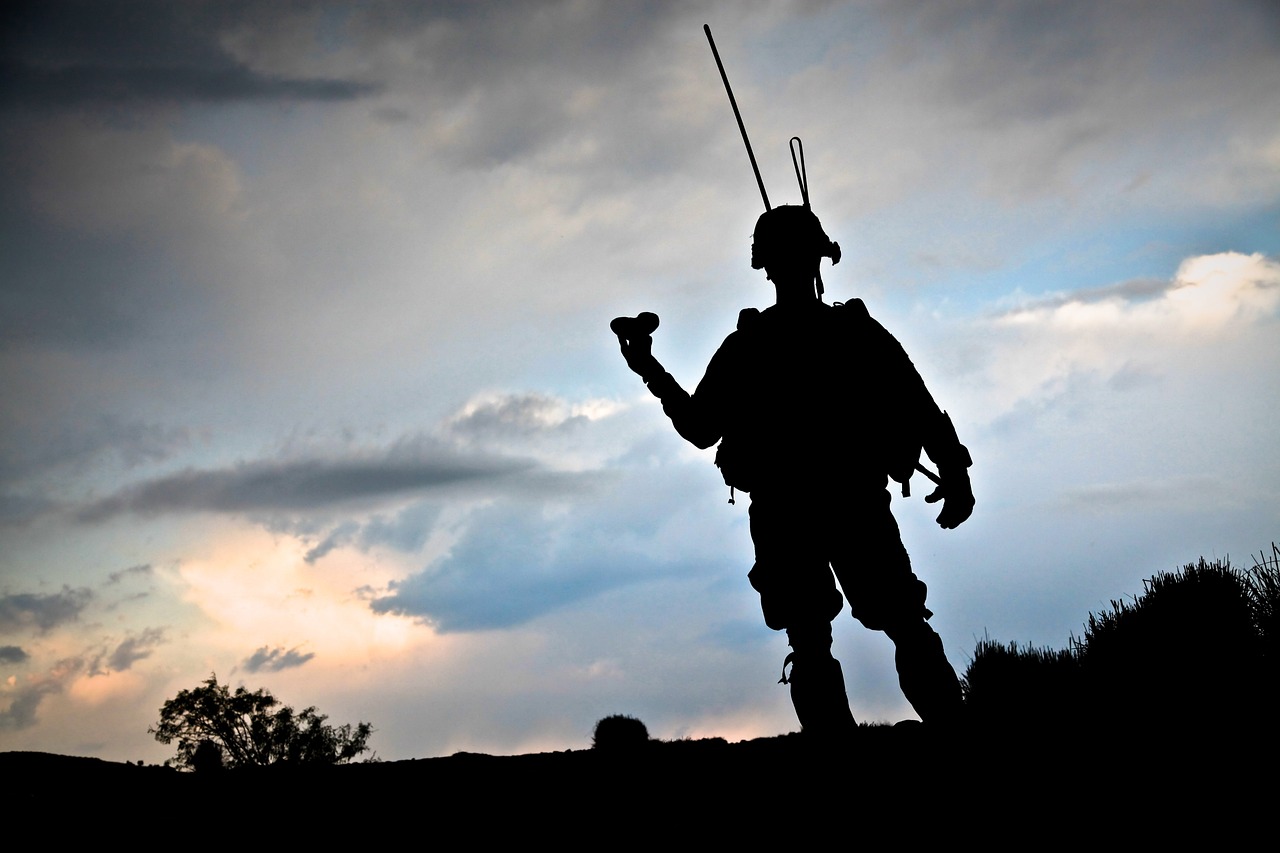
Automation in Artillery Operations
This article explores the integration of artificial intelligence in artillery systems, focusing on how it improves targeting precision, operational efficiency, and decision-making processes in modern warfare.
Artificial intelligence is revolutionizing military operations, providing advanced capabilities in data analysis, predictive modeling, and automation, which are crucial for enhancing artillery effectiveness on the battlefield.
AI technologies enable artillery systems to analyze vast amounts of data, improving targeting accuracy by calculating variables such as wind speed, terrain, and enemy movements, leading to more effective strikes.
The ability to process real-time data allows artillery units to adapt quickly to changing battlefield conditions, ensuring that decisions are based on the latest information available.
AI systems are increasingly integrated with advanced sensors, enhancing the capability to detect and track targets, which is essential for effective artillery operations.
Machine learning algorithms help in refining targeting methods over time, learning from past engagements to improve future performance and accuracy.
AI aids commanders in making informed decisions by providing predictive analytics and simulations, which can forecast potential outcomes of various tactical choices.
AI-driven automation is transforming the landscape of artillery operations, making them more efficient and effective. By reducing the need for manual intervention, artillery systems can respond to threats with unprecedented speed. This is akin to having a supercharged assistant who never tires, always ready to deliver precision strikes when needed. Imagine a battlefield where artillery can react in seconds rather than minutes; this is the promise of automation.
One of the standout features of this automation is the development of autonomous targeting systems. These systems are designed to identify and engage targets independently, which not only increases operational efficiency but also significantly reduces risks to personnel. Think of it as having a vigilant guardian that can take action without hesitation, ensuring that soldiers remain safe while the artillery does its job.
Furthermore, AI plays a crucial role in logistics and supply chain optimization for artillery units. By analyzing data related to resource availability and battlefield conditions, AI ensures that ammunition and other essential supplies are effectively managed and deployed where they are needed most. This means that when a unit requires additional firepower, it can receive it almost instantaneously, maintaining the momentum of operations. The integration of AI into logistics can be visualized in the following table:
| AI Application | Benefit |
|---|---|
| Autonomous Targeting | Increases response speed and reduces risk to personnel |
| Logistics Optimization | Ensures timely supply of ammunition and resources |
| Data Analysis | Enhances decision-making with real-time insights |
As we delve deeper into the realm of AI in artillery, it becomes evident that the future of warfare is not just about firepower but also about smart, automated systems that enhance operational capabilities. This shift towards automation is not merely a trend; it is a fundamental change in how military operations are conducted, paving the way for more strategic and calculated approaches to combat.
- What is the role of AI in artillery systems? AI enhances targeting precision, improves decision-making, and automates operations in artillery systems.
- How does automation benefit artillery operations? Automation allows for faster response times, reduces risks to personnel, and optimizes logistics and supply chains.
- What are autonomous targeting systems? These are AI-driven systems that can identify and engage threats independently, enhancing operational efficiency.
- Can AI predict battlefield conditions? Yes, AI can analyze data to forecast potential outcomes, allowing commanders to make informed decisions.

Autonomous Targeting Systems
This article explores the integration of artificial intelligence in artillery systems, focusing on how it improves targeting precision, operational efficiency, and decision-making processes in modern warfare.
Artificial intelligence is revolutionizing military operations, providing advanced capabilities in data analysis, predictive modeling, and automation, which are crucial for enhancing artillery effectiveness on the battlefield.
AI technologies enable artillery systems to analyze vast amounts of data, improving targeting accuracy by calculating variables such as wind speed, terrain, and enemy movements, leading to more effective strikes.
The ability to process real-time data allows artillery units to adapt quickly to changing battlefield conditions, ensuring that decisions are based on the latest information available.
AI systems are increasingly integrated with advanced sensors, enhancing the capability to detect and track targets, which is essential for effective artillery operations.
Machine learning algorithms help in refining targeting methods over time, learning from past engagements to improve future performance and accuracy.
AI aids commanders in making informed decisions by providing predictive analytics and simulations, which can forecast potential outcomes of various tactical choices.
AI-driven automation streamlines artillery operations, reducing the need for manual intervention and allowing for faster response times in critical situations.
One of the most groundbreaking advancements in modern warfare is the development of . These systems represent a significant shift in how artillery units engage with threats on the battlefield. Imagine a scenario where artillery can independently identify, track, and engage targets without direct human intervention. This not only enhances operational efficiency but also minimizes risks to personnel who would otherwise be exposed to hostile fire.
Autonomous targeting systems leverage sophisticated algorithms and machine learning techniques to process data from various sources, including satellite imagery, drone surveillance, and ground-based sensors. This enables them to make real-time decisions based on the most current battlefield intelligence. For example, when a potential target is identified, the system evaluates numerous factors such as distance, trajectory, and environmental conditions before executing a strike.
Furthermore, these systems can operate in challenging environments where human presence may be limited or too dangerous. They can quickly adapt to changes in the battlefield, recalibrating their targeting parameters as new information becomes available. This adaptability is crucial, especially in dynamic combat scenarios where threats can emerge unexpectedly.
To illustrate the capabilities of autonomous targeting systems, consider the following table that compares traditional targeting methods with autonomous systems:
| Feature | Traditional Targeting | Autonomous Targeting Systems |
|---|---|---|
| Human Intervention | Required for target identification and engagement | Minimal to none; operates independently |
| Response Time | Slower due to manual processes | Faster, with real-time processing |
| Data Processing | Limited to available intelligence | Integrates multiple data sources for comprehensive analysis |
| Adaptability | Rigid; changes require human input | Highly adaptable; recalibrates in real-time |
In summary, autonomous targeting systems are not just a technological marvel; they are a game-changer in military strategy. By reducing the reliance on human operators, these systems allow for faster, more accurate responses to threats, ultimately enhancing the effectiveness of artillery operations. As we continue to explore the potential of AI in warfare, the implications of such systems will undoubtedly shape the future of military engagements.
- What are autonomous targeting systems? Autonomous targeting systems are advanced artillery technologies that can identify, track, and engage targets without direct human intervention.
- How do these systems enhance operational efficiency? They process real-time data and adapt to changing battlefield conditions, allowing for quicker and more accurate responses to threats.
- What role does AI play in these systems? AI enables autonomous systems to analyze vast amounts of data from multiple sources, improving decision-making and targeting precision.
- Are there risks associated with autonomous targeting systems? While they reduce risks to personnel, ethical concerns and the potential for malfunction remain important considerations.

Logistics and Supply Chain Optimization
In the fast-paced world of modern warfare, logistics and supply chain management play a crucial role in ensuring that artillery units are always ready for action. With the integration of artificial intelligence, these systems are undergoing a significant transformation, leading to enhanced efficiency and effectiveness. Imagine a scenario where every shell, every piece of equipment, and every ounce of fuel is accounted for and delivered precisely when and where it's needed. This is no longer a distant dream; it's becoming a reality thanks to AI.
AI algorithms analyze vast amounts of data to predict supply needs, track inventory levels, and optimize resource allocation. By leveraging historical data and real-time analytics, these systems can forecast demand with remarkable accuracy. For instance, if an artillery unit is deployed in a specific region, AI can assess previous engagements and determine the likely need for ammunition, spare parts, and other supplies. This proactive approach minimizes the risk of shortages and ensures continuous operational readiness.
Moreover, AI enhances transportation logistics by optimizing routes and schedules for supply convoys. By analyzing traffic patterns, potential threats, and environmental conditions, AI can suggest the safest and most efficient paths for transporting vital resources. This is particularly important in combat zones where every minute counts, and delays can lead to dire consequences.
Additionally, the automation of inventory management is another significant advancement. AI systems can monitor stock levels in real-time, alerting commanders when supplies are running low or when they need to be replenished. This not only reduces the workload on personnel but also ensures that decisions are made based on the most current data available. The result? A leaner, more responsive supply chain that can adapt to the dynamic nature of warfare.
To illustrate the impact of AI on logistics and supply chain optimization, consider the following table:
| Aspect | Traditional Method | AI-Driven Method |
|---|---|---|
| Demand Forecasting | Historical averages | Predictive analytics based on real-time data |
| Inventory Management | Manual tracking | Automated monitoring and alerts |
| Route Optimization | Static planning | Dynamic route adjustments based on conditions |
| Resource Allocation | Reactive adjustments | Proactive planning based on predictive models |
As we can see, the shift from traditional methods to AI-driven approaches leads to significant improvements in efficiency and responsiveness. The ability to make data-driven decisions in real-time not only enhances the effectiveness of artillery operations but also increases the safety of personnel involved. With AI managing logistics, commanders can focus on strategy and tactics, knowing that their supply chain is in capable hands.
In conclusion, the integration of AI into logistics and supply chain management is revolutionizing how artillery units operate. By enhancing forecasting accuracy, automating inventory management, and optimizing transportation logistics, AI ensures that military operations are not only more efficient but also more effective. As technology continues to evolve, we can expect even greater advancements in how we support our forces on the battlefield.
- How does AI improve logistics in artillery systems?
AI enhances logistics by providing real-time data analysis, optimizing supply routes, and automating inventory management, ensuring that resources are available when needed. - What are the benefits of AI-driven supply chain management?
The benefits include increased efficiency, reduced human error, better demand forecasting, and enhanced safety for personnel during operations. - Can AI predict supply shortages?
Yes, AI uses historical data and predictive analytics to forecast potential supply shortages before they occur, allowing for proactive measures to be taken.
Frequently Asked Questions
- What role does AI play in artillery systems?
AI enhances artillery systems by improving targeting precision, operational efficiency, and decision-making processes. It analyzes vast amounts of data to calculate variables like wind speed and terrain, leading to more effective strikes.
- How does AI improve targeting accuracy?
AI technologies enable real-time data processing, allowing artillery units to adapt quickly to changing battlefield conditions. By integrating advanced sensor technologies, AI can detect and track targets more effectively, ensuring higher accuracy in strikes.
- What are machine learning algorithms and how do they help?
Machine learning algorithms refine targeting methods over time by learning from past engagements. This continuous improvement process helps enhance the performance and accuracy of artillery operations in future missions.
- How does AI assist in decision-making for commanders?
AI aids commanders by providing predictive analytics and simulations, which can forecast potential outcomes of various tactical choices. This information allows for more informed and strategic decision-making during operations.
- What is the significance of automation in artillery operations?
AI-driven automation streamlines artillery operations by reducing the need for manual intervention. This leads to faster response times in critical situations, enhancing overall operational efficiency and effectiveness.
- What are autonomous targeting systems?
Autonomous targeting systems are AI-powered technologies that enable artillery to engage threats independently. This innovation increases operational efficiency and reduces risks to personnel by minimizing human involvement in critical targeting decisions.
- How does AI optimize logistics and supply chains for artillery units?
AI optimizes logistics and supply chains by ensuring that ammunition and resources are effectively managed and deployed. This ensures that artillery units have the necessary supplies when and where they are needed most, enhancing overall mission success.





